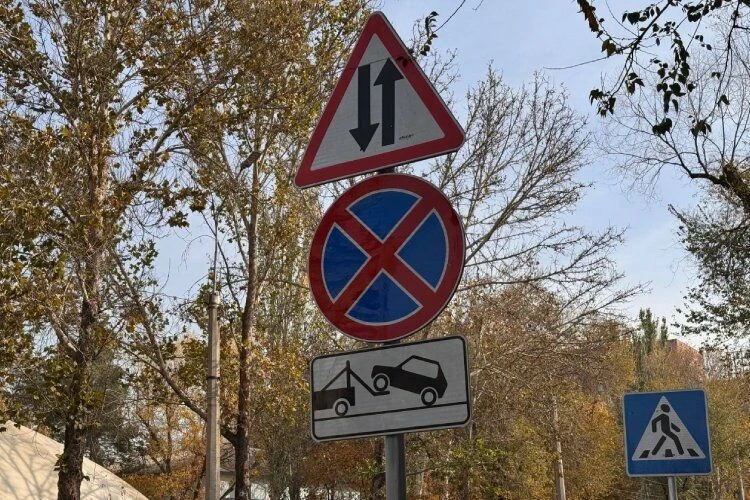
IN MEMORY OF THE GREAT AKYN TOKTOGUL
Toktogul Street... It stretches from east to west from the Ala-Too River to Fuchik Street. In the past, it was called Gryaznovskaya - named after the district chief of Pishpek, and it justified its name - it was dirtier than dirty.
However, to be fair, there were many such streets in Pishpek, if not all. There were many vacant lots on it, and houses were rarely wooden, mostly modest mud huts of the townsfolk. Only at the end of the street, on the Ala-Archa River, a brewery was launched by merchant Ivanov in 1908. By the way, during the Soviet era, the factory was repeatedly reconstructed and expanded, equipped with modern equipment. The factory's capacity increased more than 60 times. Now the factory produces, in addition to beer, kvass, lemonade, and other refreshing drinks.
Between Kazarmennaya and Bolnichnaya Streets, there were barracks. Later, in 1925, the Kyrgyz Cavalry Squadron was stationed here, later a cavalry regiment.
In 1924, the street was named after Demyan Bedny, a Soviet poet, and in 1938 it was named after the great Kyrgyz folk akyn-democrat, one of the founders of Kyrgyz Soviet literature, Toktogul Satylganov (1864-1933). The akyn was born in the Ketmen-Tyubinskaya valley. Even in his youth, he composed songs about the hard fate of the Kyrgyz people, criticized the insatiability of the bai, manaps, and mullahs, and exposed the tsarist officials.
For his denunciatory songs, the akyn was convicted in 1898 and exiled to hard labor in Siberia due to the denunciation of the manaps. Many years later, he managed to escape from there with the help of Russian political prisoners. He joyfully welcomed the news of the Great October Socialist Revolution that came to the Kyrgyz mountains and valleys. In 1919, he composed the first song about Lenin in Kyrgyz poetry.
Toktogul is the teacher of an entire generation of Kyrgyz akyns, including Alymkul Usenbaev and Kalik Akiev. His songs and poems have been translated into many languages of the peoples of the USSR. His works comprise more than ten books published in Kyrgyz and Russian.
Until the early 1930s, the street consisted of low one-story houses, but later two-story buildings began to appear. The only three-story residential building at the corner of Dzerzhinsky Street - a dormitory for NKVD workers - was built in 1938 and was one of the most beautiful and largest at that time. In the first years after the Great Patriotic War, the construction of two-story houses continued. Multi-story construction on the street began in the 1960s. Over these years, many three-, four-, and five-story buildings of various purposes were built. Among them are the four-story building of the Ministry of Construction, the four-story building of the Republican Traffic Police and the City Internal Affairs Department, and the three-story building of the Central State Archive.
On the territory of the hospital town, between Togolok Moldo and Logvinenko Streets, in 1979, the building of the Cardiology Center - the Kyrgyz Scientific Research Institute of Cardiology, established in 1977, was commissioned. The building impresses with its size and original architecture. It houses a consultation clinic for 30,000 visits per year and a hospital for 260 beds, as well as a laboratory block. The building was constructed with funds earned by the city's workers during one of the Leninist communist Saturdays.
Between Shopokov and Usenbaev Streets, in early 1981, the buildings of the Kyrgyz Experimental Secondary School named after A. S. Pushkin, which spread over an entire block, were commissioned.
Now about an event that entered the history of the street. At the corner of Dzerzhinsky Street, in a one-story house of the Dungan merchant Sher, in October 1925, an education institute (Kirinpros) was opened, which was transformed in 1928 into the first pedagogical technical school in the republic.
Its organizer and first director was the remarkable Russian educator Pyotr Kuzmich Yudakhin, who is fondly remembered by former students.
Among the students of the technical school were later famous Kyrgyz poets and writers U. Abdukaimov, Dzh. Bokonbaev, U. Dzhakyshev, K. Zhantoshyev, K. Malikov, A. Osmонов, S. Sasykbaev, M. Elebaev, and others, composer, People's Artist of the USSR A. Maldybaev, People's Artist of the USSR G. Aitieva, People's Artist of the Kyrgyz SSR A. Kuttubaev, and others.
In the block between Soviet and Krasnooktyabrskaya Streets stands a four-story residential building. It is notable for being built by the workers of Frunze and handed over on May 9, 1970, to the soldiers of the Soviet Army in honor of the 25th anniversary of Victory in the Great Patriotic War. This is evidenced by a memorial plaque mounted on the end of the building facing Toktogul Street.
In 1929, a reinforced concrete bridge was built over the Ala-Archa River near the brewery, connecting the city with the Pnshpek railway station. A rally was held on the occasion of its opening.
Today, opposite the brewery is the Osh Market, previously known as the Soviet Market. In 1983, it was rebuilt. The architects of the project were A. Nezhurin, Yu. Chubarov, K. Nazarov, and others. The builders from Osh constructed it, hence it was named "Osh Bazaar." The complex is located on a 5-hectare area on the right bank of the Ala-Archa River. It consists of various types and purposes of shops located around the perimeter of the square. The trading places in the open area with canopies are designed for 500 places.
On the eastern side of Toktogul Street, a bath and treatment complex "Zhyrgal" for 200 places has been built. The architects of the project are A. Sogonov, Sh. Nasypkulov, S. Belyanchikov.
Losev D. S., Kochkunov A. S. What the Streets Tell
Streets of Bishkek














































